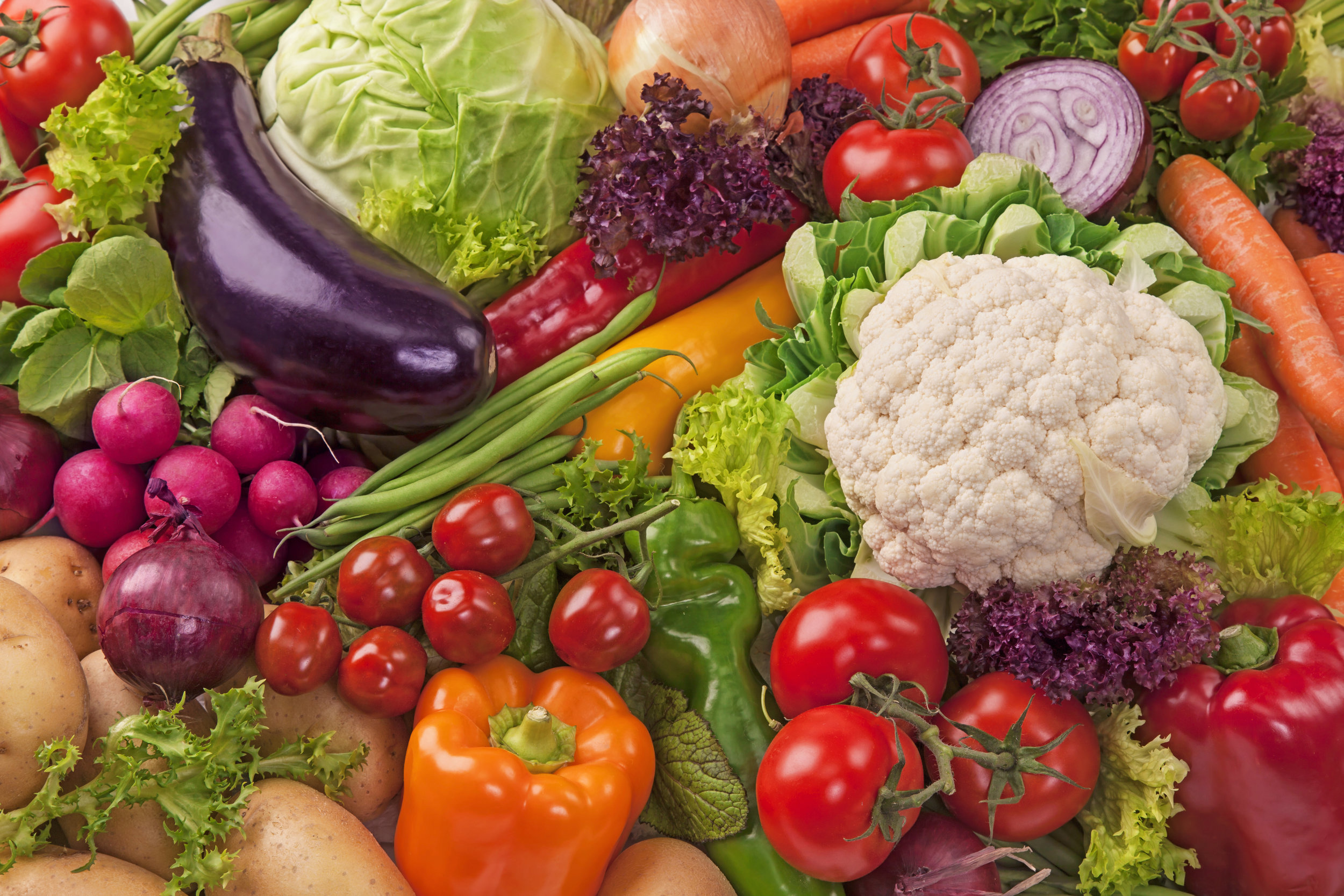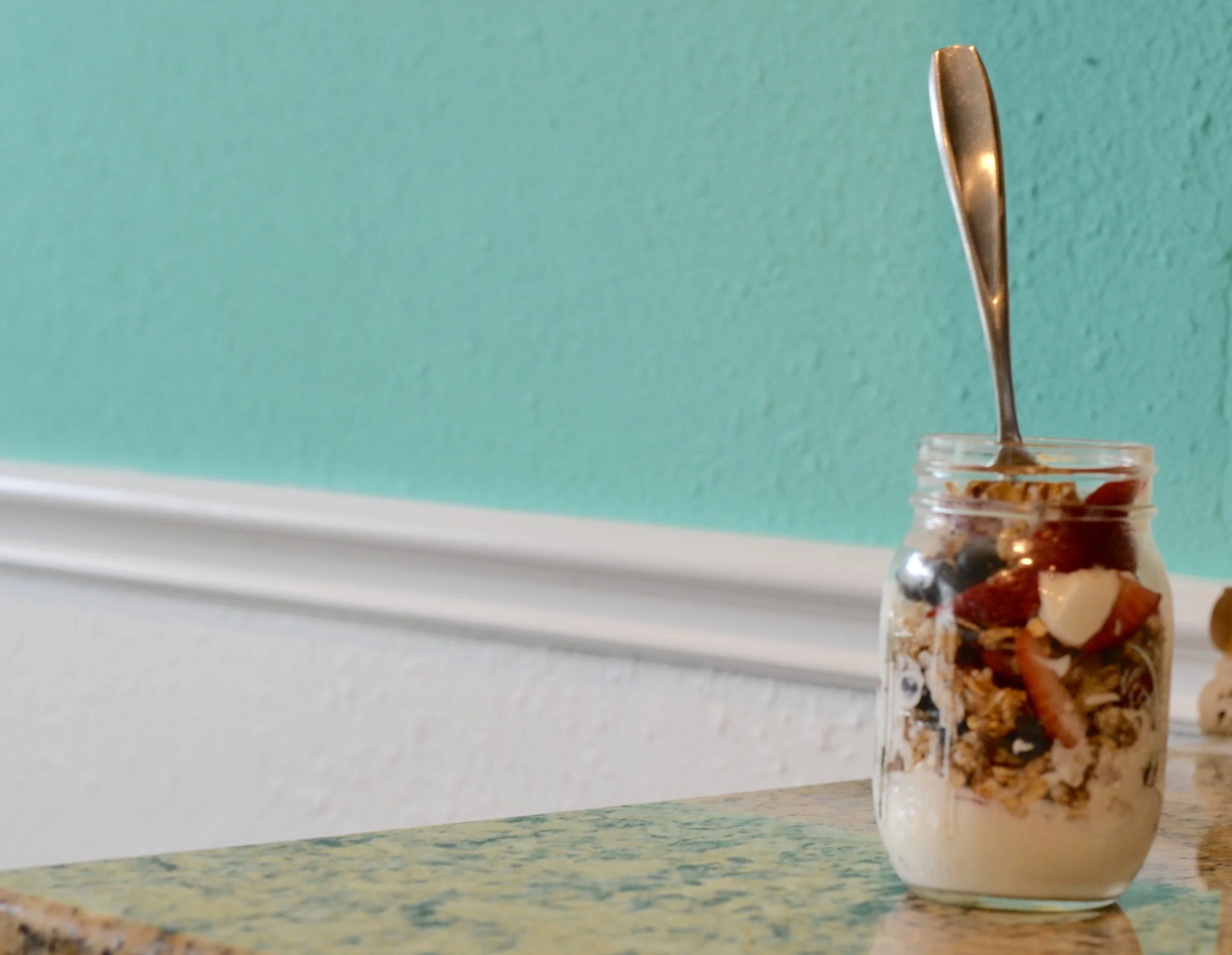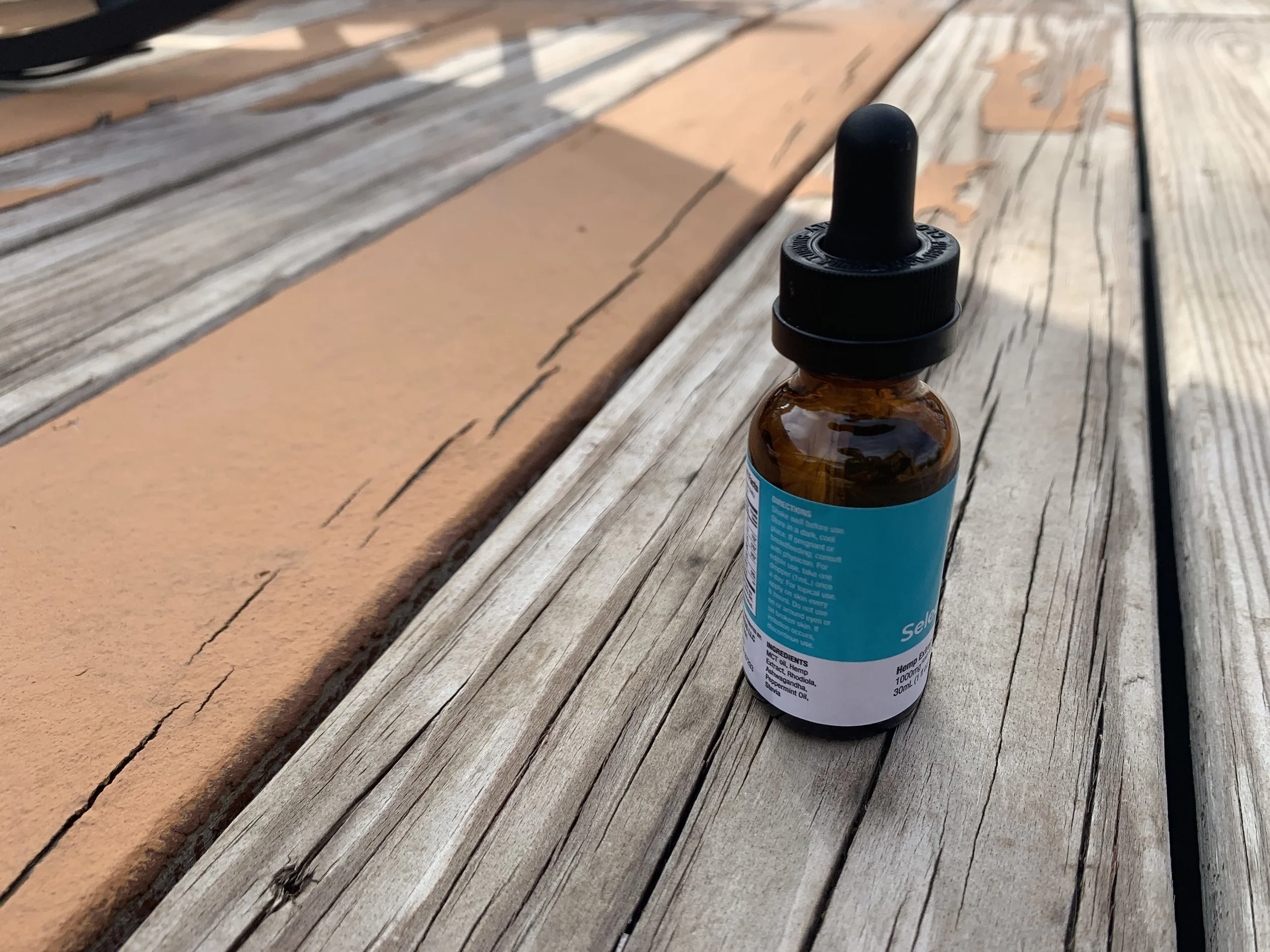When questions come up from several different clients or readers around the same time, I take it as a sign that it is a topic that people want to learn more about. When you ask me questions, it helps me too, because it gives me ideas about new blog content, so keep the questions coming.
Last week I had two nutrition clients and a follower on Instagram ask me about eating healthfully on a budget. The general consensus was they were having trouble choosing healthy foods and avoiding food waste while not breaking the bank. They have the intention that they want to eat healthier, but have this obstacle of cash flow to overcome.
How to eat healthy on a budget - save to Pinterest for later.
While it may seem cheaper to hit the drive through for a fast food meal on the dollar menu it is important to consider the long term cost to your health of eating fast food and low quality foods on a regular basis. It may be a little cheaper when you pull out your wallet, but it is a lot more expensive to deal with health care costs if you have less than optimal health in the future. The choices you make today can help make your future-self healthier and less prone to illness, sickness and disease. This is not meant to scare you, but just to consider that taking care of your body and your health today is actually less expensive in the long run.
I realize that doesn't help with real world budget issues. If you have $50 to spend on food this week you can't spend $100 on healthy groceries if it isn't in your bank account. Our goal is is to get the most healthy bang for your buck. Let's figure out to eat the healthiest food possible while not breaking the bank.
Just like anything else, healthy eating isn't all-or-nothing. That means that if you can't afford all organic vegetables from the expensive market, then you shouldn't throw your hands in the air and buy potato chips instead, because at least they are made from potatoes (hah) and they are cheap. Non-organic vegetables are healthy and chalk full of necessary vitamins and nutrients. If you can't afford grass-fed beef that doesn't mean your only other option is a fast food burger.
You have choices. It's not a choice between the best possible option and the worst possible option, there are plenty of alternatives in the middle. You don't always have to make the most nutritiously perfect choice, just strive to make the best choice that is reasonably available to you in the moment. If you are mindful of making good-enough choices most of the time, you'll be well on your way to a healthy lifestyle, even on a tight budget.
SHOPPING FOR HEALTHY FOOD ON A BUDGET
Here are 10 low cost healthy food choices to cover all your nutritional bases. Healthy eating does not need to be expensive. If you stick to the basics of whole foods from nature, you can eat healthful foods that you actually enjoy without breaking the bank.
10 low cost healthy foods. save to pinterest for later.
1. Frozen Mixed Vegetables
Bags of mixed frozen and vegetables can be very inexpensive, especially when you choose the store brand. When you buy mixed veggies you can get a variety of colorful, nutrient-rich vegetables for a fraction of the cost than buying all those fresh veggies separately. Frozen vegetables are picked at their peak and then frozen to preserve their nutrients.
If frozen vegetables sound boring, don't be afraid to add seasonings or even a little butter or cheese for flavor. You will be adding calories, but I'd rather see you eat vegetables with cheese than not eat them at all. Remember the choice doesn't have to be between steamed plain veggies or no vegetables at all. How can you make it work for you?
2. Fruits
Bagged frozen mixed fruits (no sugar added) are great as toppings and in smoothies. You can also choose fresh bananas, apples and oranges as affordable choices for snacks, sides and healthy desserts. What are you favorite fruits? Fruits are taste bud friendly and can be lower in cost when compared to packaged sugary sweets.
3. Old Fashion Oatmeal
Old fashion oatmeal provides fiber and healthy nutrients for your breakfast. Buy plain dry oats in the tall canister and add your own fruits and flavoring (like ground cinnamon). The prepackaged sweetened pouches are less-healthy and usually more expensive.
I like overnight oats for a delicious nutritious breakfast on the go. Check out this post I wrote for a variety of overnight oats ideas.
4. Potatoes
Potatoes are a power powerhouse of nutrients. They are inexpensive and have a long shelf life. Wondering if you should buy white or sweet potatoes? This interesting article goes into depth on the differences in nutrition. Spoiler alert: if you like white potatoes, there is no need to shy away from eating them. Whatever variety you choose, potatoes are an excellent whole-natural carbohydrate source to fuel our workouts and our lives.
5. Beans
Dry beans are an excellent source of quality carbohydrates and protein. With a little work upfront you can prep the beans in advance for an inexpensive and healthy meal or side dish ready to go when you are.
Pour one part beans into a large bowl, cover with four parts water and leave them on the counter overnight. The next day, discard the soaking water, put the beans into a pot, cover with fresh water and boil until tender.
6. Frozen chicken breasts
Chicken breasts are a high protein, low fat food. You can buy frozen chicken breasts in three to five pound bags that need to be thawed and cooked before eating for the best value. You pay for convenience, if you buy frozen cooked chicken breasts, they usually will be more expensive than frozen raw. If you buy fresh chicken, buy in bulk and freeze. We often cook two weeks of chicken portions at a time and freeze until needed. It is easier to make a healthier choice when a chicken breast is a defrost away.
7. Tuna/salmon packs
Tuna and salmon packs are inexpensive protein choices. One serving of tuna can have as much as 30 grams of protein. That is a lot of protein for your money. Watch for added sugars and choose water-packed tuna instead of oil-packed. Generally speaking, the plain versions are the healthiest and least expensive. You can add your own flavors: mustard, mayo, pickles, onions, peppers, cheese and/or nuts. The choices are endless to spice it up. Use in salads, in wraps or as a snack right out of the pouch.
8. Eggs
Eggs are another good source of protein, pair them with veggies and oatmeal for a balanced breakfast. Hard boil eggs for a healthy snack. Don't be afraid of the yolks. While the whites have the protein, the yolks are full of healthy nutrients.
9. Greek Yogurt
Choose plain Greek yogurt for the highest protein yogurt choice with the lowest sugar content. Buy the big 24 oz tub and separate into small storage containers. While the small pre-packaged cups are more convenient, they are also more expensive and tend to have a lot of added sugars. Flavor plain Greek yogurt with fresh or frozen fruit for a healthy, inexpensive, high-protein snack without the extra sugar.
I use these cups to portion out my servings. (click on the image for an affiliate link.)
10. Cottage Cheese
Cottage cheese is a fantastic low cost, high protein choice. Buy the big tub and portion out the servings. If you don't think you like cottage cheese, try adding a bit of canned pineapples (packaged in water or juice, not syrup) for a delicious snack or side dish. Cottage cheese is delicious with frozen berries or fruits.
MORE STRATEGIES TO SAVE MONEY
DRINK WATER
Water is the healthiest drink choice and it is virtually free. You can flavor water with cucumbers, lemons, fruit or berries. Here are some ideas for additional strategies to drink more water in your day.
WASH/CHOP YOUR OWN VEGGIES
Generally speaking, the more convenient it is, the more expensive it will be. You can buy pre-washed, pre-chopped salad greens and spinach, which is great if you have the money, but it is less expensive to buy spinach leaves and wash and chop it yourself. Here are 10 easy ways to eat more veggies.
AVOID WASTE
Avoid waste by storing veggies in air tight containers in your refrigerator.
Freeze bananas when they start to turn brown and use the frozen bananas in smoothies or as toppings on your yogurt and cottage cheese.
A lot of times waste happens because we have big plans to meal prep and we make all these healthy meals but when the time comes to eat them, we'd rather just order a pizza. (What? Just me? I didn't think so.) Make sure you are prepping meals you actually want to eat. If you meal prep six chicken breasts and six sides of steamed veggies, most people won't have the will-power to eat that all week long for months on end. It's just too boring.
It's OK to enjoy your food. Really! Mix up flavors/seasoning so you are not eating the same thing every day. Cook and prepare six chicken breasts, but prepare two with salsa, Mexican style, another two with red sauce, Italian style and the last two mixed up in a big garden salad...Um, Lea style! Keep it interesting so when it comes time to eat the meal you worked so hard to prep, that you actually want to eat it and it doesn't get thrown away.
BUY IN BULK
Buy non-perishables in bulk. Buy meat in bulk and freeze. I buy nuts and seeds in bulk (I know they won't go to waste). Sometimes joining a CSA (community supported agriculture) to share the cost of high quality produce with your neighbors can be less expensive than buying from a store. Research the cost locally as it varies by location.
EAT AT HOME
It's usually less expensive to prepare your meals at home than it is to eat out at a restaurant. Even if you make healthy choices at a food establishment, a home cooked meal will almost always be healthier, less-expensive and less-calorie dense. You can save a lot of money by limiting restaurant meals to an occasional treat, rather than a regular habit. Some people say they can't afford to buy healthy groceries but eat out at restaurants several times a week. It's about priorities. If healthy eating is important to you, you can find a way that works within your budget.
Did I give you any ideas? Did I miss any big ideas? How do you save money on groceries and healthy eating? Are you going to try any of my suggestions? Let me know how it goes. Need more help? I still have room in my online healthy habits nutrition program. Learn to build healthy habits and maximize your nutrition from the ground up. Ignore all the latest food fads and learn how to lose weight and feel great the sane and sustainable way, once and for all.
Still have questions? I'd love to help!















If you have questions about running and weight loss, I’ve rounded up the blog posts to help you with answers. Why do I gain weight during marathon training? What to do when your weight loss plateaus from running. Are you running for performance, or running for weight loss? And why it matters that you choose one. I finish my personal story of how I used running as part of my strategy for permanent fat loss.